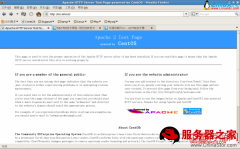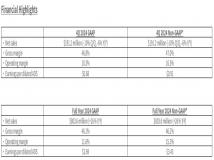本文介绍Nginx服务器中配置lua+fastcgi,希望对于初学Nginx服务器相关的朋友有帮助,更多Nginx安装、配置、报错处理等资源请本站内搜索。。
With all that being said, I’d like to post a quick tutorial on how I got this setup. It was quite the task. Although there was a tutorial I found to do the same task, it was a little bit confusing. My tutorial will have a lot of the same steps, with some minor adjustments. This tutorial is written at an intermediate level. Some trivial steps have been omitted.
NOTE: This has been tested with Debian 5.0.4 (Stable)
Install nginx
apt-get install nginx
We’ll have to do some modifications later on to add the FastCGI handler. For simplicity we will keep the web path to “/var/www/nginx-default” and listen on port 8081 in case you have another webserver running on port 80.
Install lua 5.1 (and WSAPI libraries)
apt-get install lua5.1 liblua5.1-wsapi-fcgi-0 liblua5.1-coxpcall0 liblua5.1-filesystem0
apt-get install liblua5.1-wsapi-doc
Can’t do much testing without this. Note: The second line is not necessary if you are running Debian testing, and get the liblua5.1-wsapi-fcgi-1instead.
EDIT: You’ll notice that I added in liblua5.1-filesystem0. Steve pointed out that there is a bug in liblua5.1-wsapi-fcgi-0. It doesn’t include it as a dependency. He reported this as a bug here, and it was fixed in liblua5.1-wsapi-fcgi-1.
Install spawn-fcgi
If you’re running Debian testing you may be able to get spawn-fcgi through the distribution, however, I just downloaded it and compiled from source.
wget http://www.lighttpd.net/download/spawn-fcgi-1.6.3.tar.gz
tar -xzvf spawn-fcgi-1.6.3.tar.gz
cd spawn-fcgi-1.6.3.tar.gz
./configure
make
make install
Create a FastCGI Socket
spawn-fcgi -F 4 -u www-data -s /var/run/nginx-fcgi.sock -P /var/run/nginx-fcgi.pid — /usr/bin/wsapi.fcgi
For the sake of simplicity, we will just spawn it manually for now. If you’re feeling crafty you can add the above line to the start condition in/etc/init.d/nginx, and the line below to the stop condition. You can add both of them to restart.
cat /var/run/nginx-fcgi.pid | xargs -n 1 kill
Create a lua file in /var/www/nginx-default/
In this tutorial, use hello.lua. You can change this to whatever, you want but just make sure you make the modification in the nginx configuration below as well.
Edit /etc/nginx/sites-available/default
Now let’s add the code that will point nginx to the correct file. For simplicity, we will simply point it to hello.lua. You can change this to anything, or simply modify the code to accept any *.lua file, as seen in the tutorial listed above. Here is the top of my default file:
listen 8081 default;
server_name localhost;
access_log /var/log/nginx/localhost.access.log;
location / {
fastcgi_pass unix:/var/run/nginx-fcgi.sock;
fastcgi_param SCRIPT_FILENAME “/var/www/nginx-default/hello.lua”;
fastcgi_param PATH_INFO $request_uri;
fastcgi_param QUERY_STRING $query_string;
fastcgi_param REQUEST_METHOD $request_method;
fastcgi_param CONTENT_TYPE $content_type;
fastcgi_param CONTENT_LENGTH $content_length;
}
Restart nginx
/etc/init.d/nginx restart
Visit http://localhost:8081/
Congratulations! You should now see hello.lua.
If you have any problems, post in the comments. Stay tuned for
声明: 此文观点不代表本站立场;转载须要保留原文链接;版权疑问请联系我们。









